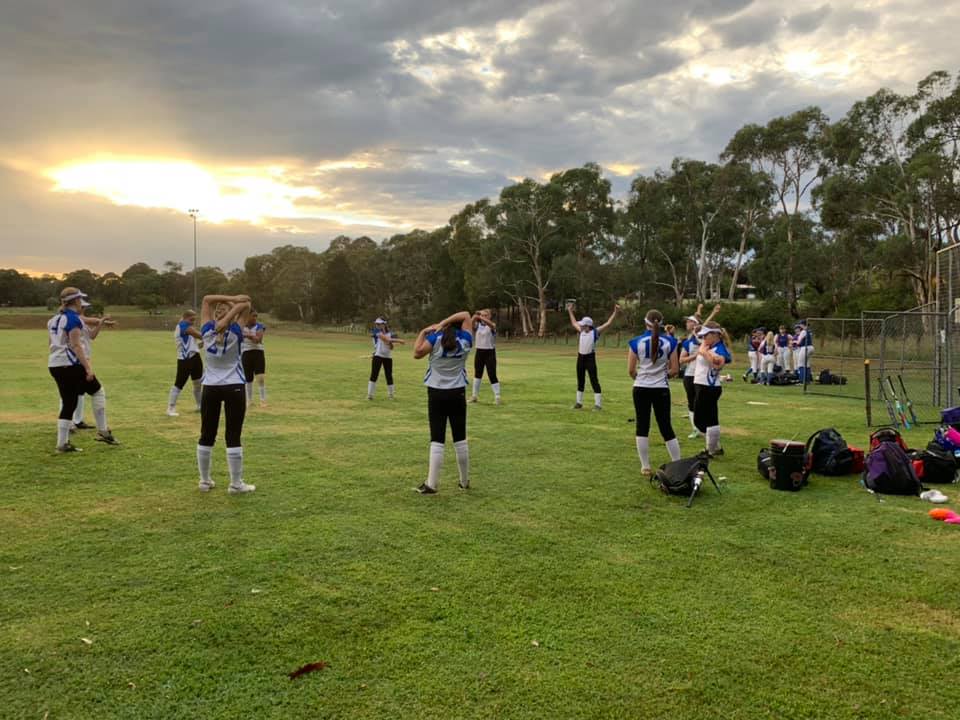I have just returned from a very intense, hot and exhausting long weekend where I had the pleasure of coaching an U15 girls softball team in a three day tournament. As the tournament progressed I saw that there are many similarities between the game I was coaching and Agile delivery.
Who owns the outcome?
We start with Product Owners, in this case, parents. They invested a lot of money in travel, accommodation and game fees and wanted to make sure that their daughters got plenty of game time, opportunities to showcase their skills, learned and had a lot of fun. The equal game time and improvement therefore is a user story – for me, the coach – to deliver.
There are other Product Owners: the district which the team represented, and they also had user stories based around finishing in a good position and ensuring the good name of the district was upheld – in the way the team and officials played competitively and behaved.
Our team for the weekend was made up of a lot of representative players but also had a wide mix of others with developing abilities and ages, all who had objectives of their own, yet had to feel and work as part of the team. In a team of unpaid volunteers like a junior softball team, each of those players has their own usecases they wanted out of the weekend, often unspoken.
So, ultimately I had 13 players, 13 sets of parents, the district they represented and my own and assistant coach’s and two other officials including the scorer; all with our own objectives to manage into delivery. Softball coaching is a fantastic way to learn how to multitask as a scrum master.
Winning is an unsaid requirement or undocumented usecase in junior sport. Everyone – including the product owners, is happier if you deliver a win, and for the first two days of the tournament we did exactly that.
The Agile Scrum Process
Over three days there were 11 games for our team, so each game became a scrum and my role as coach became that of the scrum master.
With every game having four innings or close to, that meant we had four showcases to display to the product owners how we were progressing. As we hit more competitive opposition, there were more necessary scrums to re-plan and design how to best use or re-use our resources without expending all of the best at once. Each inning and game gave us a plan, design, changes-on-the-fly and a test of what we thought we knew. As the tests/games went on, we delivered more and bigger wins.
After each game, there was a retrospective: who played well in what position, what did we learn and how could we incorporate the changes into the next game. Always tracing back to what our Product Owners were looking for. And as the scrum master or coach I was well aware that I had a fine line to tread between keeping everyone happy with game time and positions and keeping most happy with winning the competition.
The Agile Team and Culture
Agile has another learning to lend to softball plays. Even on “agile teams” there are those who are slower or more clumsy. Every softball team I’ve coached has had the little fast runners, who just need to somehow get on base to get around on the steal. Some may not be great batters so need to learn the tricky stuff like bunts and slaps, maybe some switch-hits; or the even trickier ego-stuff like sacrificing their own batting for others to score on.
Other members are less quick around the bases, but big batters. They have to learn that their percentage on-base is not going to be great, and how to bat to not be caught out on the fly. How to not go for the hero-attempt for the safety of the team. Others are agile in their thinking, understanding the game play; whilst others are less game-centric but will play out of their skin with the correct coaching.
During each game the opportunity is there to call on the skill sets required, just like having an automation specialist or subject matter expert joining the scrum for a couple of days to help work towards the common outcome of the team. We found our specialist infielders, outfielders, pitchers and catchers and worked to create specialisms for the more junior team members for them to fall back on through other delivery projects in the future. But we also had some fun when there was time over the weekend. Pitchers tried out catching. The girls played a boys team, and pitched like boys. New specialisms were found.
What I do know is that even if you gave me a team of nine allstar softballers who are fast around the bases and heroic on the field, big batters, know the game and know their positions, they still may lose the game, face even better opposition on the day, or may fall through injury, political restraints like incompetent umpiring or environmental forces like having their game called off with a thunderstorm.
Ultimately in our finals game on Day 3 we encountered some lousy calls from an umpire, which lost us the game which counted. There’s no risk mitigation over being totally in the control of an outside party, there can only be – for the scrum master – a re-plan of how to continue on to make the most out of what we had already developed and delivered.
Software Delivery is just like any sport: prone to risk and changes each day.
When the tournament was complete, we had the opportunity to get feedback from the product owners, on whether they liked what they saw, whether their expectations (user stories) had been met and whether they liked the final outcome.
In this case we finished top of the round robin tournament, and all Product Owners were happy with the delivery outcome. However, the team couldn’t come up with the win for the tournament finals – something only this country does, and there were a few tears all around on that last day. What I hope has happened a few days later is that all team members can look back at how they delivered what counted – systematically, repetitively, statistically and with great agility.
Under-pinning all of this was the most important aspect of delivery outcomes, and that is the Team Culture.
Without the right culture, delivery becomes harder, as the team are not supporting each other. In the softball world as with Agile delivery, if the mindset is not right, you will never achieve the outcome you are looking for. As the coach/Scrum Master it’s important to establish the right culture for the team to thrive in.
For two days in over 40 degrees C / 104 degrees F, this softball team supported each other, cheered each other on, and created for many of them, the best games of their lives.
They know now how to win, now it’s up to them to learn how to lose and move onto even better deliveries in the future. I have no doubt that this team has the capability to deliver, now it’s up to them to believe the same thing of themselves.


